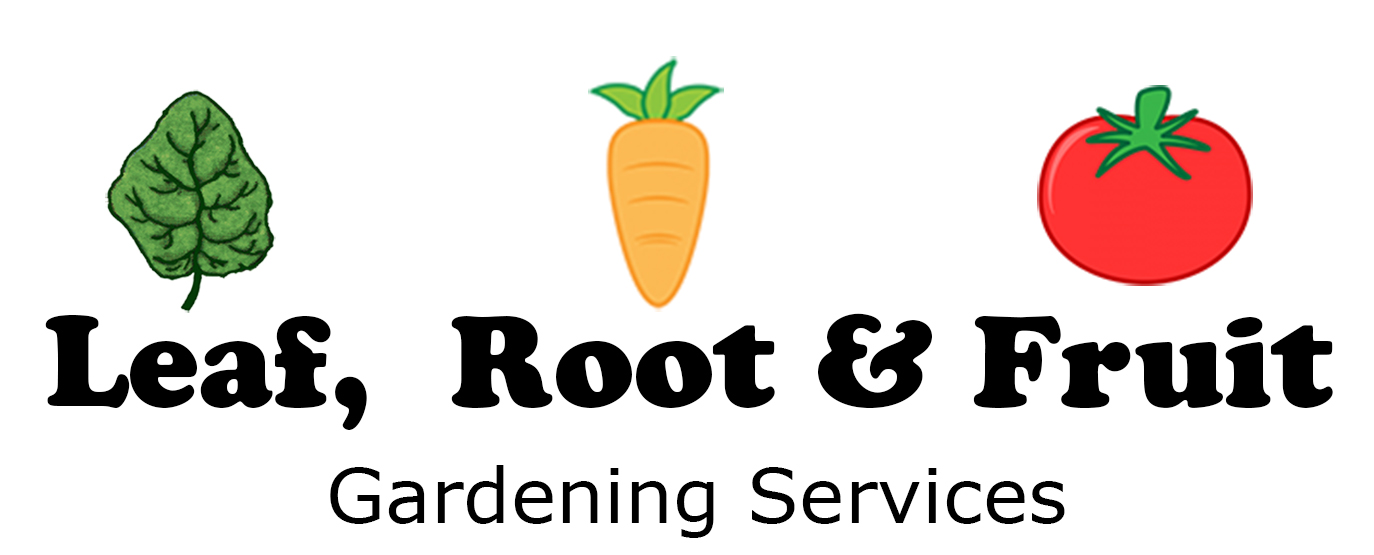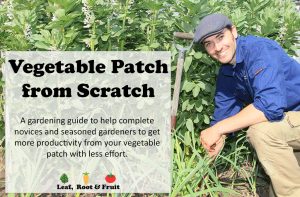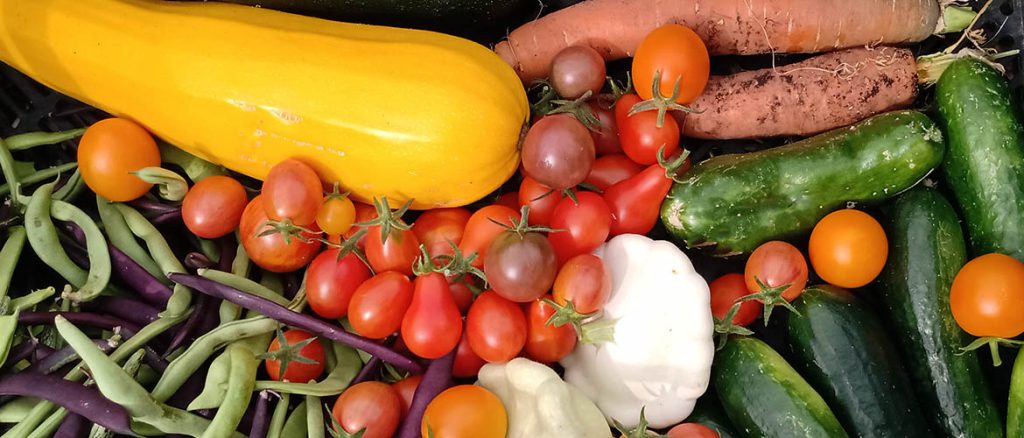
I remember vividly the open-for-inspection of the first house that my partner Caryn and I rented together. Caryn was hesitant – “The whole backyard is concreted; we can’t have a garden.” But I was excited by it. There were no trees or shrubs to contend with, just two half wine barrels filled with “dirt” and a few weeds. The whole backyard was a blank canvass.
I wanted to grow food in that space, and I knew it could be extremely productive. I had grown vegetables for most of my life, but much of my experience had been growing in the ground on a rural property. This space offered me a chance to tinker with raised beds and trial new things. I was inspired and excited by the opportunity.
We moved in and over the next few months I collected timber pallets, pulled them apart and constructed raised beds. They had intricate planting “windows” and were all quite over the top. I collected self-watering plant pots from hard rubbish, improved the soil and planted the half wine barrels.
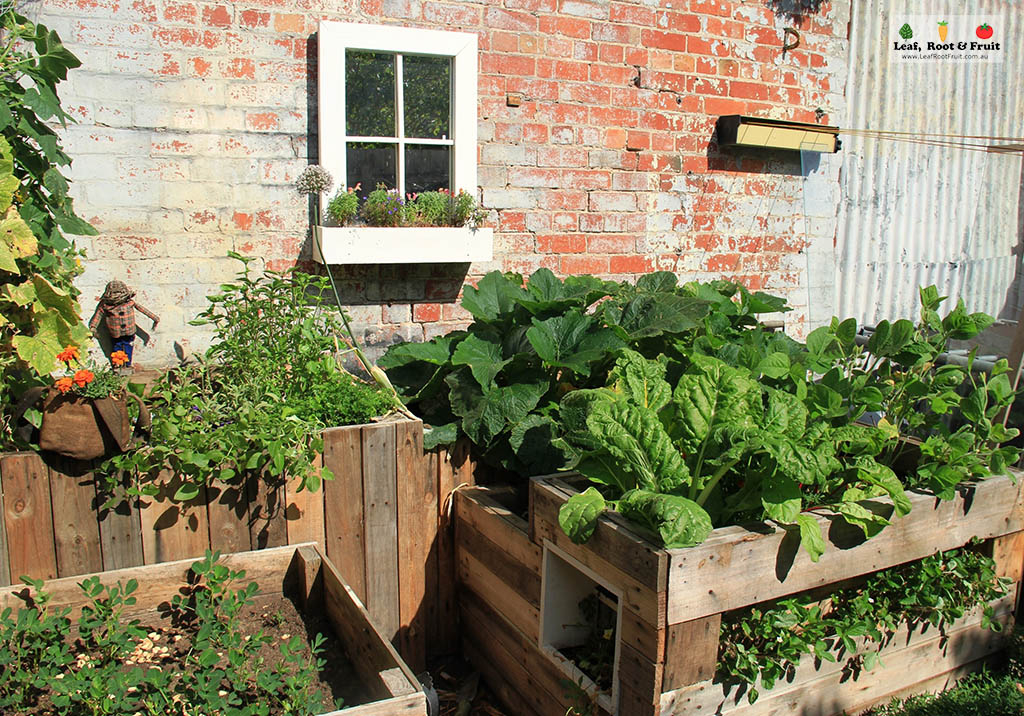
As the Leaf, Root & Fruit business grew and my vegetable patch expanded, we scaled up to other rentals with larger gardens. Each time my vegetable garden needed starting from scratch. Now I’m gardening on a very large scale on our own property. I’ve helped many clients over the years and installed hundreds of raised beds and wicking beds. I’ve learnt a lot in my time about setting up a brand new patch.
If you’re scratching your head and wondering what to buy and how to get started to grow your own food, then this post is for you.
Let there be light
Your vegetables will need sun to grow. You’re going to need to work out where you can put your vegetable patch to maximise the amount of light it receives. Full sun is ideal (but not always possible in suburban areas).
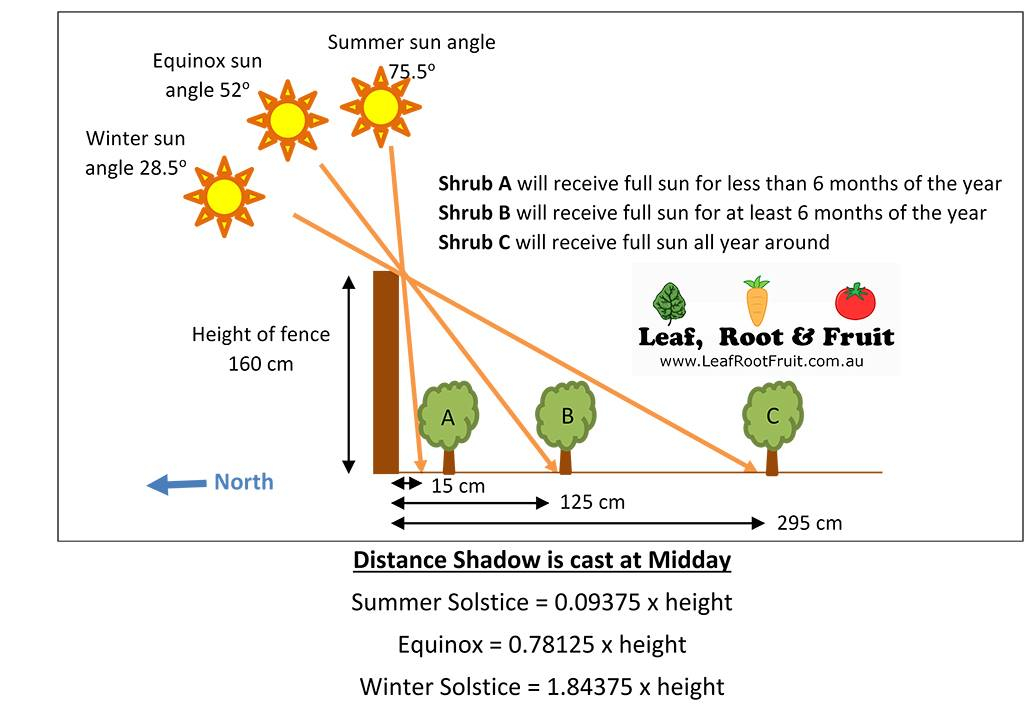
Your vegetables are going to need regular watering and picking. So place your patch where you’ll walk past it often enough to see when it needs a drink. If children visit the garden regularly then avoid locations where errant footballs may squash your precious seedlings.
Microclimates can enhance your growing success by allowing you to harvest summer vegetables such as tomatoes over a longer period of time. Avoid placing your patch near large trees or shrubs, because allelopathy and thieving roots will soon stifle your growing success.
Read more about where to locate your patch here.
What’s the best value garden bed for my money?
You’re itching to buy your first garden bed. You’ve done some research but there’s an overwhelming number of choices.
The good news is that you can put your credit card away. You don’t even need a raised garden bed! You can grow in the ground. I love growing food in the ground because:
- it’s cheap, or even free
- the plants often establish better
- you can easily expand or contract your vegetable patch depending on your requirements, spare time and success.
Just dig up the grass and get planting. More on that here.
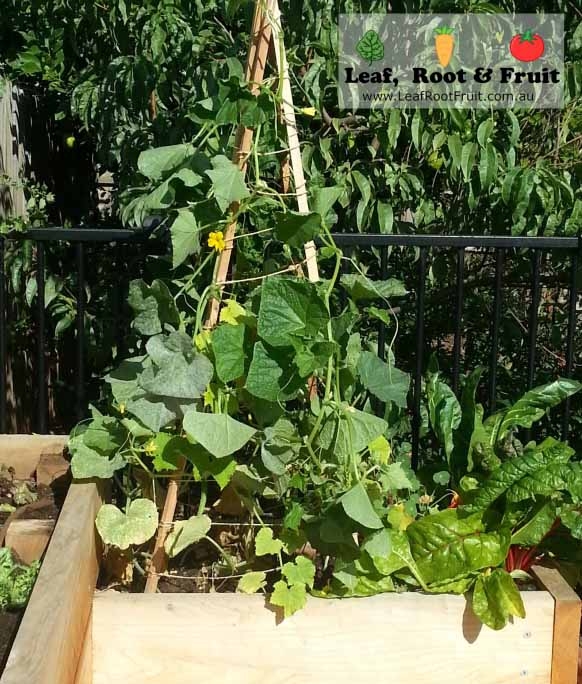
There are good reasons for choosing raised beds though. You may need to demarcate an area, want to avoid digging up the lawn, have issues with bending, or just like the look of them. Perhaps your entire backyard is paved with concrete like mine was.
Whatever the reason, you’ll have a tough time deciding what sort of raised bed to get. Do you want to construct them yourself from timber sleepers? Buy a small kit set like a self-watering planter? Or go with a corrugated iron or more expensive Corten steel raised bed? I’ve covered options for raised beds and their pros and cons here.
On a budget? Then consider dismantling pallets and building your own. However, the timber lasts only a year or two before rotting and falling apart.
To wick or not to wick? That is the question
In your search for garden bed options you may come across wicking beds. Essentially, they are garden beds built to be giant self-watering planters. They are great, reduce water usage and are useful in a few situations. But generally I don’t recommend them. I’ve explained the reasons why I don’t use wicking beds here. They’re not the panacea that all those wicking bed sellers make them out to be.
Is bigger really better?
All plants, including vegetables, need consistency. The larger the volume of soil they are growing in, the more consistent the soil temperature, soil moisture and soil nutrient levels will be. Bigger planters and garden beds will have more consistent soil conditions. This leads to healthier plants that give higher yields. But keep in mind accessibility. You don’t want to have to climb onto your garden bed to pick your beans. Keep the maximum width of your bed to around 120 cm if you can access it from both sides. Halve that if the bed is going up against a fence.
On the matter of fences, I’ve renamed these. They’re no longer fences, they’re “possum highways”. Growing food up against a fence line is just asking for trouble. More on that here.
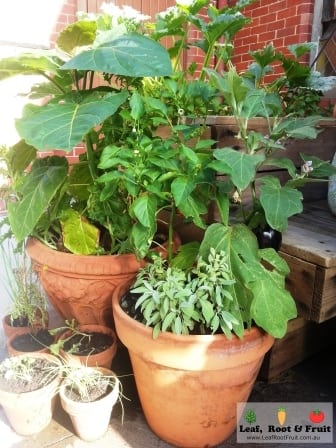
You need to get the overall size of your vegetable patch right. Go too big and you’ll never keep on top of the weeds and the watering. I often see overgrown jungles of weeds where folks have overcommitted and couldn’t manage. The end result is that they’ve given up. Growing food can be very time consuming. Be realistic with your time budget and if you’re unsure whether vegetable growing is right for you, then start small.
If you find you need or want more space to grow food you can always expand your patch later. This is especially the case if you’re growing in the ground.
Read more about choosing the right sized patch for you and what sized harvest that may equate to here.
What type of soil do I need for my vegetable patch?
Many vegetables are hungry feeders. That is, they need lots of nutrients in the soil to help them grow. You can provide this nutrition via fertiliser or compost. It’s a bit like comparing junk food with a balanced diet, and I much prefer the latter. Your vegetables are going to grow better on a balanced diet of rich compost.
If you are filling raised garden beds then you can usually buy a soil blend from a garden supplies outlet that already has plenty of compost worked through it. These blends are often listed as “veggie mix” or something similar.
If you are growing in the ground then purchase or make straight compost to enhance the soil.
Compost is the answer to most soil problems:
Heavy clay – add compost
Light sandy soil – add compost
Lacking nutrients – add compost
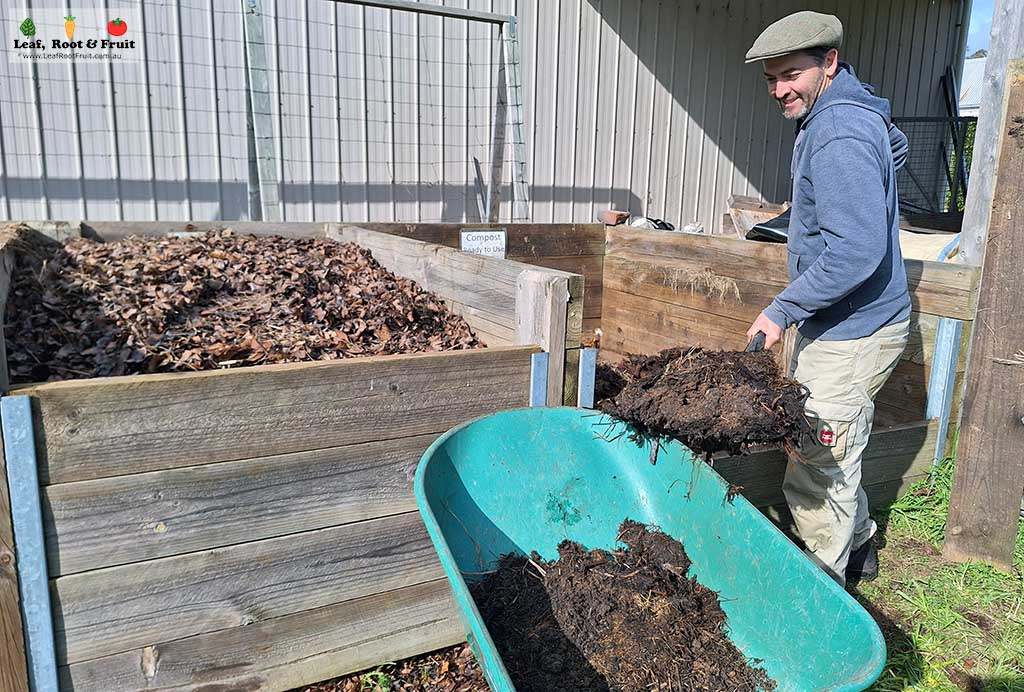
Other options for growing mediums include no-dig beds and lasagne gardening. Read more about preparing soil for your vegetable garden here.
Speaking of compost, should I be composting?
Yes! There’s a mountain of composting options for you to consider, whether you live in a tiny flat with a balcony garden or on a large rural property. I’ve summarised them in this post and included a handy flow chart to help you decide which one is right for you.
This post discusses how to use that precious compost in the garden.
Want to know more?
This post is a very quick overview of setting up a vegetable patch. I could go into so much more detail for you… and I have!
My gardening series Vegetable Patch from Scratch is designed to help everyone from complete novices to seasoned gardeners to get more productivity from their vegetable patch with less effort.
It covers everything you might want to know about growing vegetables, including:
- working out where to put your patch
- how to set it up
- planting and tending your crops
- common problems
- harvesting and preserving.
Head along to the first post of the series to learn more about where to put your patch. The index lists all 39 posts if you’re looking to read up on something specific.
Happy gardening
Duncan

